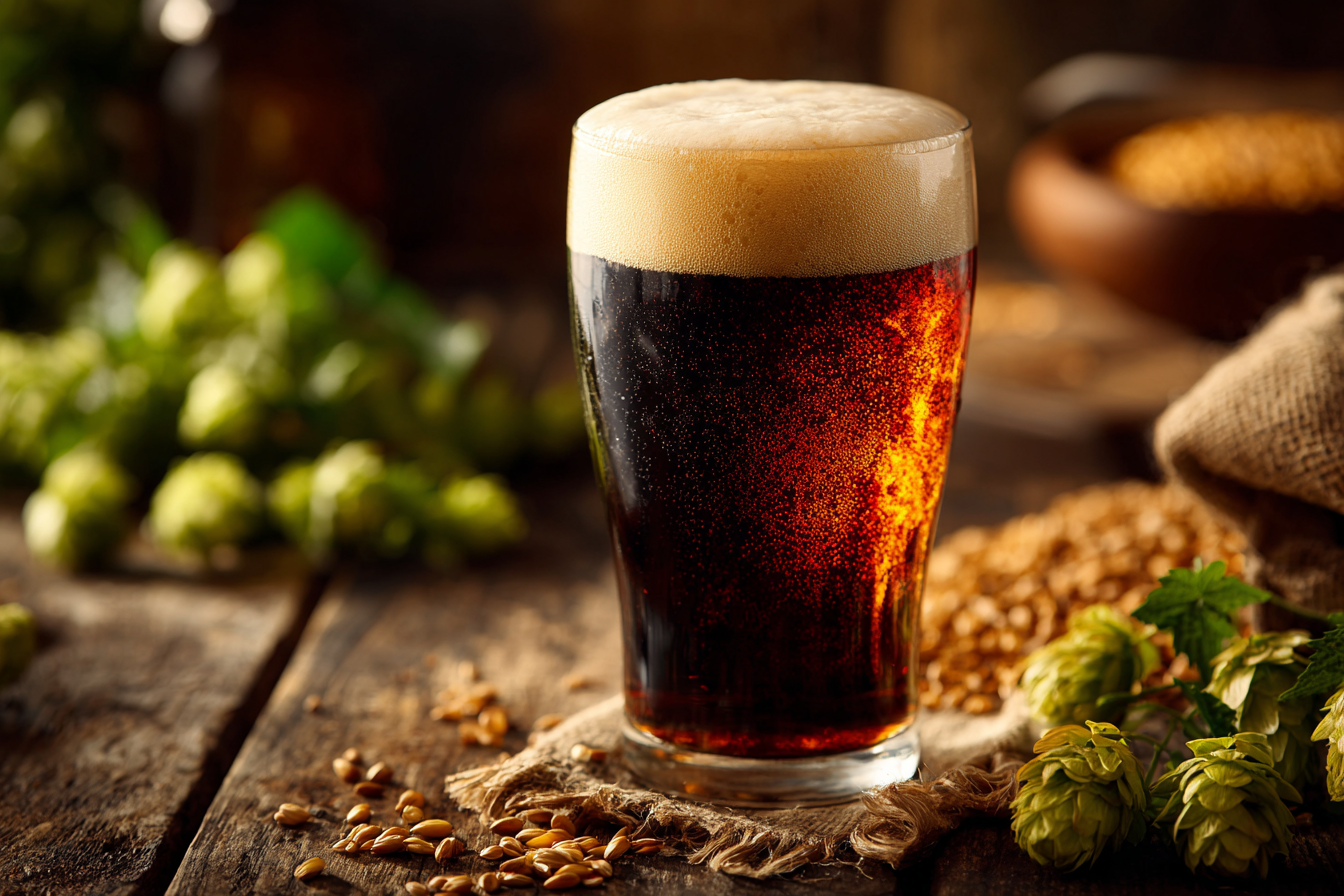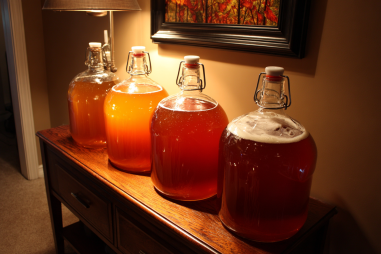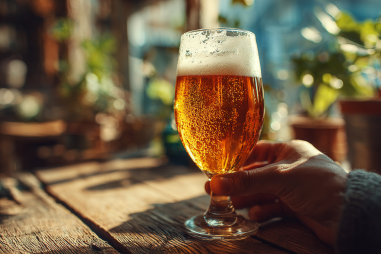Czech Dark Lager holds a special place among beer enthusiasts for its rich flavor and smooth drinking experience. Known for its distinctive balance of sweetness from roasted malts and a subtle bitterness, this style offers a complex yet approachable profile that appeals to both casual drinkers and connoisseurs alike. In this article, we’ll explore the sensory characteristics that define Czech Dark Lager, diving into its malt and hop notes, mouthfeel, carbonation, and how it compares to other lager styles. We’ll also highlight ideal food pairings as well as optimal serving practices to make the most of this classic beer.
Sensory Characteristics of Czech Dark Lager
At first glance, Czech Dark Lager often surprises with its deep amber to brown color, sometimes veering toward a reddish hue. Its appearance hints at the rich malt foundation but also signals a complexity that goes beyond looks. On the nose, it typically delivers mild toasted bread aromas mingling with subtle caramel sweetness.
The flavor profile features a harmonious interplay between the roasted malt character and hop bitterness, with neither overpowering the other. This balance results in a smooth, slightly sweet taste with gentle earthy and floral hop undertones. Unlike darker beer styles such as stouts or porters, Czech Dark Lagers generally avoid any heavy roast bitterness or burnt flavors, favoring a clean and drinkable finish that invites another sip.
Malt Notes: Caramel, Toffee, and Roast
The backbone of any Czech Dark Lager is its malt bill, which imparts those unmistakable caramel and toffee notes loved by many. Specialty malts such as Munich, caramel, and some light roasted malts contribute layers of flavor that add depth without crossing into heavy roast territory. When you sip a well-crafted Czech Dark Lager, expect sweetness reminiscent of soft caramel or rich toffee, balanced by a delicate roastiness that adds a subtle coffee or chocolate nuance.
The malt sweetness is never cloying in Czech Dark Lagers; instead, it provides a soft and rounded character that complements the hop bitterness. This malt-forward approach represents a signature trait distinguishing Czech Dark Lagers from other darker beers which might lean heavily on roasted bitterness.
Hop Bitterness and Aroma Nuances
Hops play an essential but measured role in the flavor profile of Czech Dark Lager. Traditionally, noble hops such as Saaz are used, contributing a gentle bitterness that balances the malt sweetness perfectly. Rather than aggressive bitterness often found in modern craft IPAs, the bitterness here is mild, smooth, and well-integrated into the overall flavor.
Aside from bitterness, the hop aroma is understated but crucial. Subtle herbal, floral, and spicy notes from Saaz hops softly emerge, adding complexity and freshness to the beer. This restrained hopping ensures the malt remains the star while giving a clean and balanced finish that is pleasantly dry without being overly astringent.
Mouthfeel and Carbonation Levels
Czech Dark Lagers are known for their approachable mouthfeel, which combines a moderate body with silky smoothness. The malt provides enough structure so the beer feels satisfying and full without becoming heavy or cloying. This makes it exceptionally drinkable and versatile across different settings.
Carbonation in this style is typically moderate, producing a lively yet soft effervescence. This level of carbonation helps to lift the malt sweetness from the palate and refresh the drinker after each sip. The carbonation also enhances the perception of hop bitterness, adding to the balanced sensory experience.
Comparison with Other Lager Styles
Understanding Czech Dark Lager’s unique traits becomes clearer when compared to other popular lager types:
- Pilsners: Czech pilsners are lighter in color and have a crisper, more pronounced hop bitterness and sharper finish, often highlighting Saaz hops more prominently.
- Munich Dunkel: Another dark lager, Munich Dunkel tends to have richer roasted malt flavors and a heavier body, often feeling more robust and less sweet than Czech Dark Lager.
- Schwarzbier: Schwarzbier, or black beer, is darker and generally more robustly roasted, sometimes with a slightly smoky character. Czech Dark Lager remains lighter-bodied and less aggressively roasted in comparison.
- American Dark Lagers: These often lean towards lighter flavors or higher carbonation but lack the malt complexity and balance that characterize Czech Dark Lagers.
In essence, Czech Dark Lager offers a middle ground between light, hoppy lagers and heavier, darker brews, providing a balance of malt sweetness, hop bitterness, and smooth drinkability that makes it truly distinctive.
Food Pairings Complementing Flavor
Czech Dark Lager’s flavor profile lends itself to an array of food pairings, enhancing the overall gastronomic experience. The malt sweetness, mild roast character, and balanced bitterness allow it to pair well with many dishes such as:
- Roasted meats: Pork, beef, or game, especially when prepared with caramelized or smoky spices, match perfectly with the malt backbone.
- Charcuterie and sausages: Traditional Czech sausages and cured meats resonate well with its rich yet subtle flavors.
- Smoked cheeses: Cheeses like smoked Gouda or aged cheddar complement the beer’s toffee and caramel notes.
- Grilled vegetables: The beer’s mild bitterness cuts through charred and caramelized flavors beautifully.
- Chocolate-based desserts: Its subtle roast character can pair nicely with the richness of chocolate, especially dark or milk varieties.
These pairings raise the enjoyment of both the food and the beer, allowing the individual flavors to shine while harmonizing overall taste sensations.
Serving Temperature and Glassware
To fully appreciate the Czech Dark Lager’s nuanced flavor profile, proper serving temperature and glassware are essential. Ideally, this lager should be served cool but not ice cold—around 45 to 50°F (7 to 10°C). Serving too cold can mute the delicate malt sweetness and hop aroma, while serving too warm may emphasize unwanted sweetness or slight alcoholic warmth.
The recommended glassware is a tulip-shaped or a traditional Czech lager glass, which helps concentrate the aromas while allowing room for a modest head that locks in the beer’s bouquet. These glasses also aid in a comfortable grip and enhance the visual appeal of the beer’s rich color.
Pouring gently down the side of the glass to preserve carbonation is optimal, yet a bit of foam head is desirable to trap aromatic compounds and enhance the sensory experience.
In summary, Czech Dark Lager shines due to its artful balance of roasted malt sweetness, gentle hop bitterness, and smooth mouthfeel. From its inviting amber hue to the carefully measured carbonation and complex flavors, it invites beer lovers to savor each sip. Whether enjoyed solo or with complementary dishes, this style stands as a testament to the nuanced craft brewing tradition of the Czech Republic, offering a rewarding experience that continues to captivate palates worldwide.







